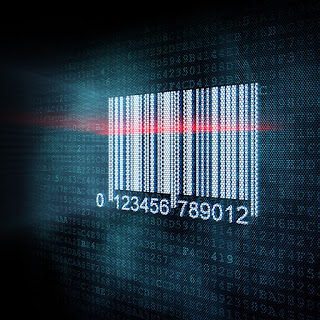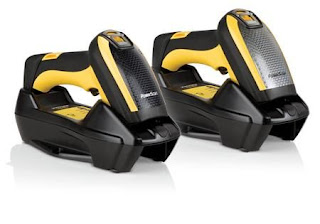 Industrial barcoding technology has witnessed notable advancements over the past several years. These advancements have significantly helped to streamline, automate, and enhance various operations involved with barcode printing, scanning, and related tasks associated with inventory management, logistics, and distribution.
Industrial barcoding technology has witnessed notable advancements over the past several years. These advancements have significantly helped to streamline, automate, and enhance various operations involved with barcode printing, scanning, and related tasks associated with inventory management, logistics, and distribution.From cutting-edge barcode scanners and readers to progression in today's industrial barcode sensor technology, below are five advancements that define the evolution of industrial barcoding technology.
1. Advanced Symbology
The underlying data matrix of industrial barcoding technology has seen a great improvement in barcodes as it allows manufacturers to trace products easily, and that they are error-proofed. The two dimensional encoding is an improvement from its 1D cousin since it has the ability to represent more data.Of the various matrix codes available, QR codes find a greater use as they can encode complex patterns including the Japanese Kana and Kanji characters. These camera-based decoders have greatly eased production besides reducing the physical risk exposed to employees who used previous technologies.
2. Barcode Scanner Efficiency
The advancement of encoding technology has led to the development of more reliable and efficient industrial barcode scanners. Unlike laser scanners, digital industrial barcode readers can decode both one -dimensional and 2D barcodes in any direction. They are also used for capturing and transferring images, which facilitates easy capture of signatures.Area imagers are the choice devices for reading Direct Part Marking codes in production lines. As a result, area imagers have become significant for decoding critical tracking information and in inventory management. In this case, direct parts marketing/DPM readers play a vital role in cultivating greater efficiency for inventory tracking and management.
3. Precision & Flexibility
Contemporary industrial imagers adequately overcome the challenges of decoding poor quality barcodes. They are better suited for closer range barcodes, especially the 2.5 mil codes. Linear imagers find a wider industrial application than laser scanners due to their better scan time of poor quality labels. Low quality images are a challenge to laser scanners, which often substitute unclear data. On the other hand, linear imagers do not generate code substitutions. Linear imagers have higher scan rates, typically between 200 and 800 scans per second compared to 50 sps in laser decoders.Solid-state electronics have seen a smooth transition from bulky scanners to portable and handheld barcode decoders. This has made it easy to scan bulky items without the need for lifting. Cordless scanners that make it easy to scan items across a store for inventory purposes. Due to their solid-state nature, imagers are more reliable than lasers. The latter produce a moving spot through a combination of moving mirrors which lowers their suitability in warehouse applications.
4. Sensor Technology
Like other digital detectors in the market, most linear imagers use charge-coupled-device components for detection. However, Complementary Metal Oxide Semiconductor detectors are finding a broader application due to their reliability and low power consumption. An improvement to this technology is the Active Pixel CMOS Sensors, components that combine the digital processor and the light sensor in one chip. In effect, APS CMOS sensors are smaller, consume less power, and are more reliable than CCD and CMOS sensors.5. Media Compatibility
The ability to synchronize barcode information with other media in real time is a milestone achievement in industrial barcode scanner technology. Most scanners are adapted for direct connection to a computer through a USB port, and are compatible with typically all operating systems. Depending on the area of application, the scanner software may support automatic download of product details such as name, price, and date of manufacture.Most barcode scanner software is customized to allow the addition of items in a collection and post classifieds to the internet by simply scanning a barcode. This technological advancement makes online publishing easier and enables faster comparison of product details with related items.

No comments:
Post a Comment